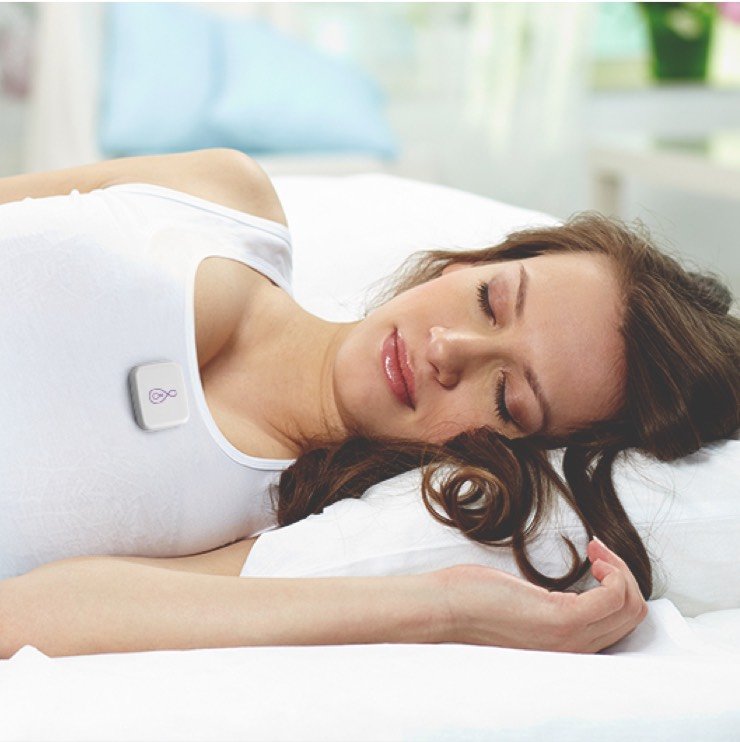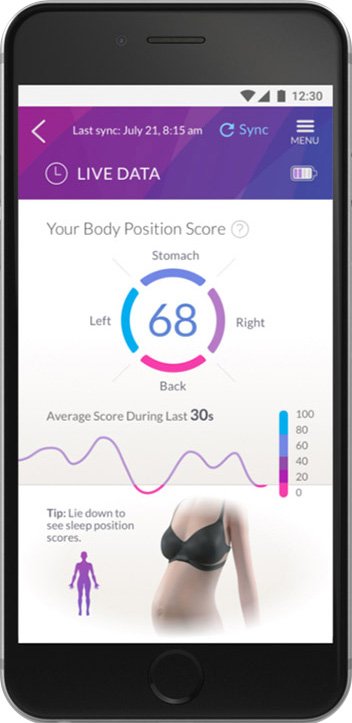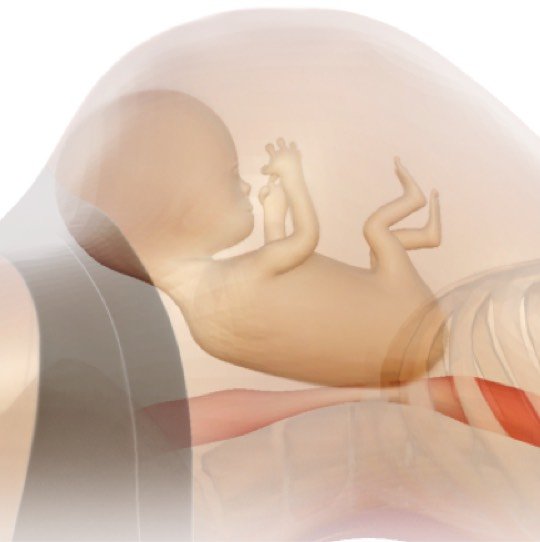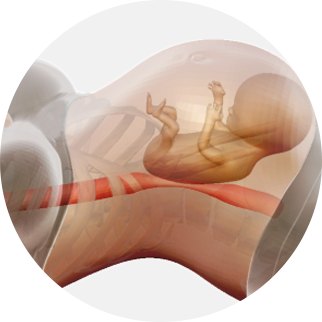The Science Behind Sleep Position
Supine (back) sleep and snoring are both serious pregnancy health risks
Pregnant women sleep on their backs 27% of the night 
Women with pronounced snoring and sleep apnea during pregnancy are twice as likely to develop preeclampsia.
Preeclampsia (a complication observed in 7-9% of pregnant women that causes high blood pressure, kidney damage, and other problems) is the leading known cause of pre-term birth and is also associated with 2x risk of autism.
Supine sleep results in a 2.7x increase in the frequency and severity of snoring and sleep apnea, both of which are highly associated with preeclampsia and gestational diabetes.
Pregnancy Coach System Helps Reduce Back Sleep

Woman in Left Sided, OB recommended, sleep position.
Our smart wearable sensor vibrates when you have been in a dangerous position for too long.

Easy-to-use app lets you see your sleep patterns and adjust alarm settings.
Woman in Left Sided, OB recommended, sleep position. Easy-to-use app lets you see your sleep patterns and adjust alarm settings.








